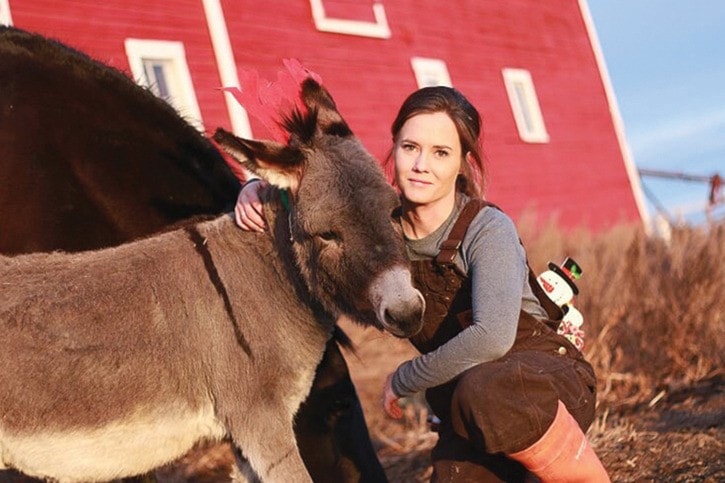In her more than eight years working in the animal welfare field, Erin Deems saw everything from moments of joy to moments of unexplicable sadness.
One thing she saw every year, without fail, was the failure to locate fosterage for the larger, non-companion animals like horses, donkeys, and pigs. There simply weren't enough places to bring these animals to when they were neglected, mistreated, or simply unfortunate.
Take for instance the pig, Harry.
"I'd never had a pig before," Deems said. Then one day, she received a call from a friend who worked at a slaughterhouse. The pig had trundled out of the truck with the other pigs for slaughter, but was too small to be butchered. Unfortunately for the pig, biodiversity regulations prevented the pig from being returned to his home farm, since pigs from all over were sent to the slaughterhouse.
"The only option for the pig was to be killed and tossed on the kill pile," Deems said. While she herself is a vegan, she doesn't expect other people to be. So long as animals are reared in a humane manner and aren't killed needlessly, she can live with what the industry is.
The killing of the pig because he was too small violated that ethic, though. He would die for nothing, and so Deems tried to find someone who could take him. It would mean that the pig would be out of the food chain entirely, but in the end, she couldn't find anyone. So she took him.
"Just until I could find a place for him," she said. That temporary stay turned into a permanent one.
"I just love that pig," she said.
It was Harry's plight that inspired Deems to start the Saving Grace Animal Sanctuary, though she had to wait until she no longer worked in the animal welfare field, since it would be a conflict of interest. Up and running since November 2015, the sanctuary has become a place for the larger animals to go to recover from mistreatment and misfortune.
There, the animals are taught to socialize with each other and other animals as well as humans, who are often regarded with fear.
"I didn't anticipate the smaller animals, the companion animals like dogs and cats," Deems said. But the companion animals are also in need of fostering, especially those deemed "unadoptable." Whether it's because a feline is feral or because a dog is untrained, Deems spends hours upon hours working on socializing and training the animals so they can be adopted out.
"There's hours of training, exposure exercises, so we can get them to the point where we're comfortable they'll be a good addition to someone's home and family," she said.
They also adopt out cats in a barn program — all the farmer or rancher needs to do is show the cat won't be turned out into the cold.
The sanctuary doesn't require adoption fees from those who want to adopt, but asks for donations since the not-for-profit wouldn't be able to function without financial assistance.
"We have a lot of cats so cat litter is always needed," Deems said. "Pet food. We can even take compost-foods for the pigs."
Over the years, even when not officially open as a sanctuary, Deems has taken in all sorts of animals, never closing her doors to a creature in need. She's been a host to multiple pigs, cattle, horses, owls and companion animals.
Harry the Pig inspired an affection in Deems for the porcine mammal, and one thing she wants people to know is that a vast majority of abandoned pigs are pet-pigs.
"There's no such thing as a teapot pig," she said. "They are pot-bellies, and they can get up to 300 pounds if you keep feeding them. There's no such thing as a small pig."
She said that many people adopt the little piglets thinking the creature won't grow to enormous size, and then reject the animal when it does. Thus, Deems ends up with another pig at the sanctuary.
"Just know what you're getting into before you adopt a pig," she said.
The sanctuary is open for people to come, meet and interact with the animals, Deems said. Located west of Erskine, the sanctuary allows people to connect with animals again, especially those people who didn't grow up on farms.
"It's important to remember these are breathing, living creatures," Deems said. "We often look at them as just food, commodities. And they're more than that."
